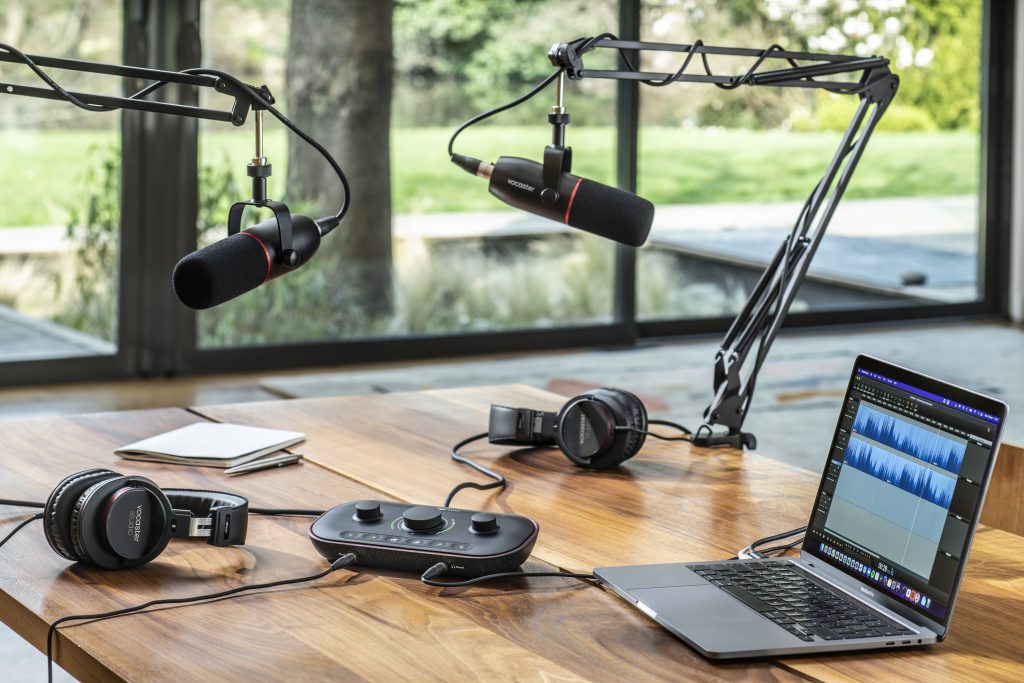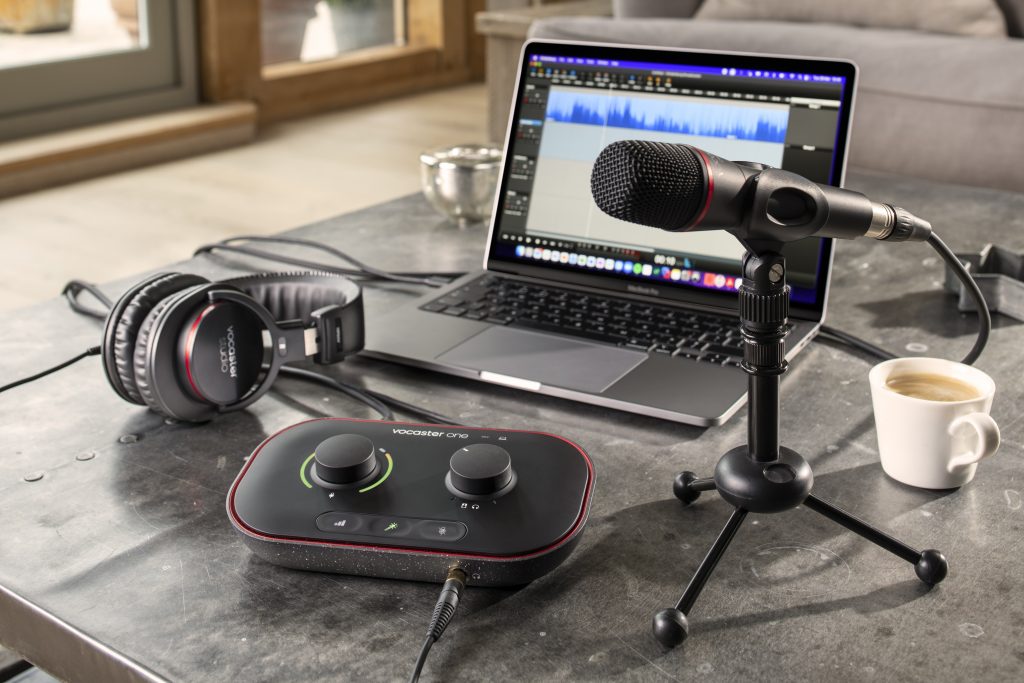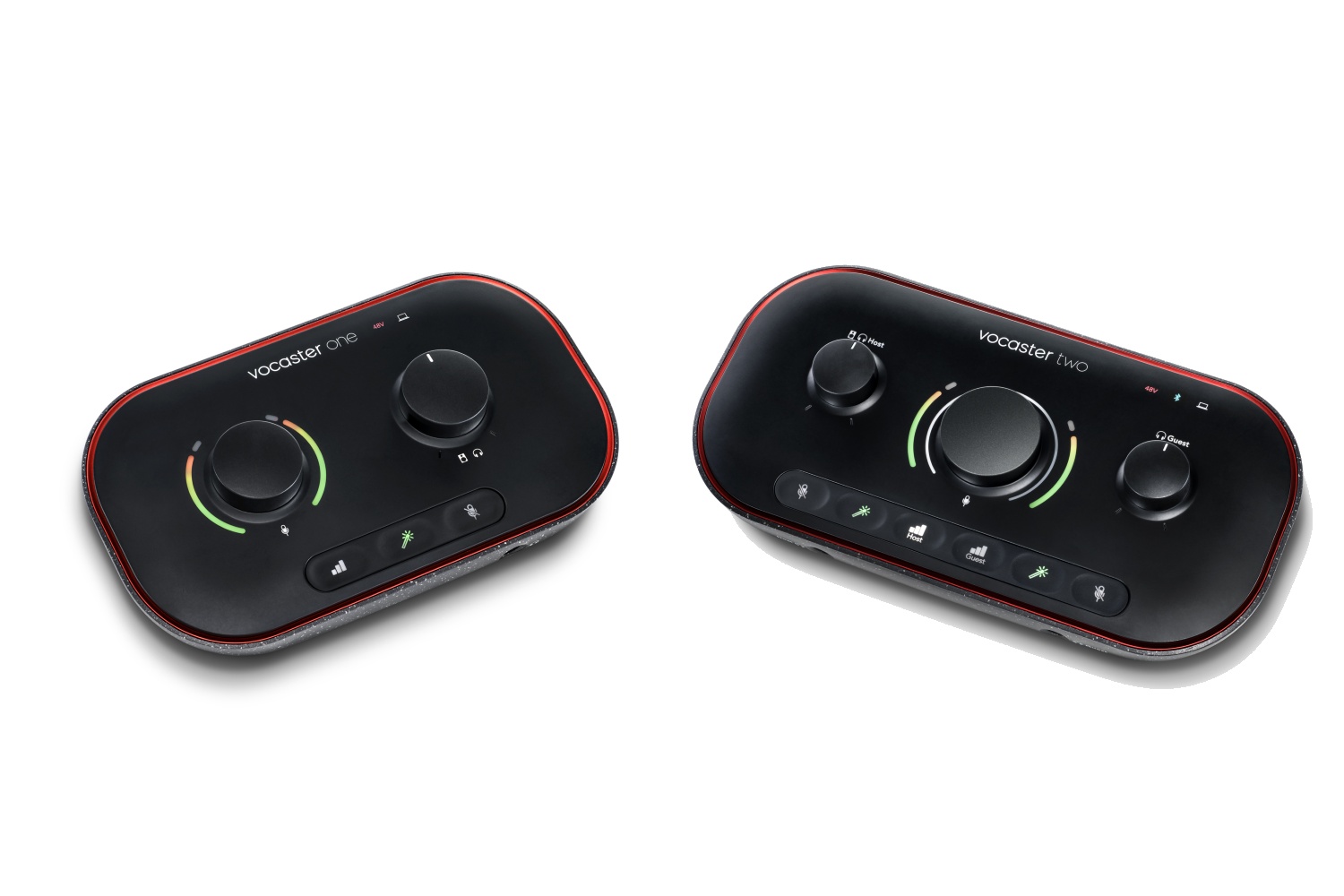Words by Sam McNiece
Focusrite Australia | Inquire for pricing
The podcasting space has become one of the biggest growth areas over the past few years with a vast majority of streaming services now offering podcasts in addition to music. This growth has unleashed a wave of products that cater specifically to providing people with an affordable way to set up and achieve professional results for their podcasts.
In light of this virtual onslaught of content being generated, the market leaders in the affordable audio interface space, Focusrite, have released their Vocaster range, suited for this exact crossover between professional-sounding results and an affordable product aimed at entry-level podcasters. These new devices act as audio interfaces and a live podcasting solution with a bundled control software which claims to be the “easiest way to bring studio-quality sound to your podcast”. Let’s see how it stacks up.
Read more gear reviews here.
Connectivity wise, the Vocaster One features one XLR mic in, two TRS outputs, one headphone port, a TRRS input/output for connecting a phone, and a 3.5mm jack output, while the Vocaster Two features all this, plus an additional XLR microphone input, headphone port, and Bluetooth – both bus powered via USB-C. The top panel of these audio interfaces have a very clear layout featuring volume controls for headphone outputs, buttons for mute and enhance, alongside a button for activating the gain control for each input. There are very clear LED lights around the edges of the central knob which show the input level of each microphone input with a defined red section to see if you are clipping. Having all these buttons within arms reach is a blessing while you’re recording as you can conveniently mute while you’re flipping through paperwork or about to cough to create a better experience for the listener, and save time in post.
The small form factor of the Vocaster One and Two is impressive, packing all these connections and features into a compact enclosure makes them easy to travel with and will enable you to record your podcasts from just about anywhere you can find a quiet space. The buttons feel solid and the knobs smooth to the touch which is great news from this affordable audio interface, as this is where some of the cheaper products lack in.
The Vocaster One is best suited for individual hosts who sometimes have external guests join them remotely, while the Vocaster Two is better for an individual host who has guests in person, or a duo who always record podcasts together. Both feature flexible internal mixing via the Vocaster Hub and controls for certain features on the physical device.

Perhaps one of the best features of the Vocaster range is the accessible and functional control software which can be used to mix and control all features on the device. The aptly named Vocaster Hub gives you control of both microphone inputs independently including phantom power (48V), gain, mute, enhance – which functions as an all in one signal processor – and auto gain, in addition to a mixer which lets you mix all your audio sources in one place.
The microphone preamps boast 70dB of gain which is more than enough to get a decent level out of pretty much any broadcast mic you might already have or are looking to purchase. After setting your mic gain, you can try out one of the enhance presets to implement some EQ and compression at the touch of a button. The four presets available are clean, warm, bright, and radio, all with a unique sound character. For the budding podcaster with little experience in sound engineering or without a budget for a sound engineer, these presets will help elevate the quality of your podcast to new heights and add a consistency to your sound.
Say you have a friend wanting to call in and join your podcast live, the Vocaster range provides you with a few options to get there, not just one. You could connect your phone via Bluetooth (Vocaster Two only) and call them using whichever app you prefer, use the TRRS connection for the same effect, or you could use the loopback function on your computer to route audio from your favorite video conferencing software to and from the device. All three of these options can also be used to play other audio from their respective connected source, but because the Vocaster Hub features two loopback channels, this option would be best utilized for adding sound FX, controlling background music, and even playing pre recorded segments on your live podcast seamlessly from your computer.
The layout and design of both the Vocaster One, Two, and its control software make it a great choice for creating a live podcast without having the headache of running through a complex DAW, but its digital outputs can also be recorded for editing and mastering at a later date. The 10/14 channels available to route as you please include a mix-minus (basically the whole audio coming from the device but not the loopback channels) for adding a video guest so they don’t hear themselves echo, a show mix of all inputs, and independent channels for each input. Obviously this device can also be used as a standard audio interface with the DAW of your choosing for recording and sending audio to your studio monitors.
Overall, both of these interfaces feature quality Focusrite microphone preamps with digital functionality in the Vocaster Hub that’s easy to use and powerful enough to create professional-sounding podcasts with minimal time investment on the mixing process. For all those readers out there who have listened to Joe Rogan and thought, ‘I could do that’, these interfaces are a fantastic way to get your story out into the world with a price tag that won’t break the bank.
There’s a lot of flexibility on offer from these small form factor podcasting interfaces which will provide a solid foundation to kickstart your podcasting journey, or supplement the one you’ve already started.

Head to Focusrite for more information.
